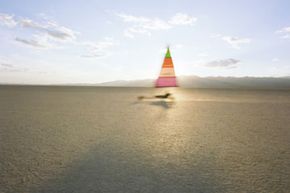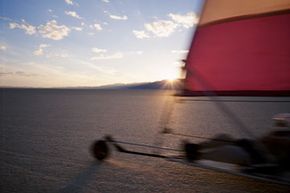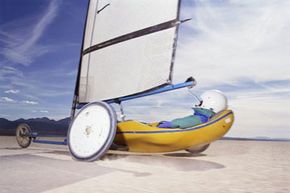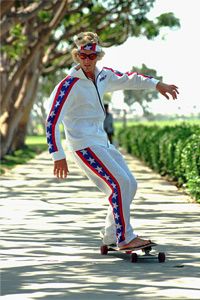Imagine this: You're in your small sailboat, skimming along at speeds that top 50 or 60 miles per hour. The wind whips your face. Exhilarated, you skillfully guide your craft, moving the sail to adjust your speed. The landscape is a blur until you gradually head up into the wind and allow your sailboat to slow to a stop.
Then you step out of your boat, smiling, and walk over to the shade where your friends have been sitting, watching you sail.
Advertisement
No, you aren't walking on water. You're participating in an extreme sport called land sailing.
Some historians trace land sailing back to ancient Egypt and other cultures that used vehicles with sails for land transportation. Drawings exist of land sailors on the beaches of Belgium in the 1500s [source: Bassano]. These days, land sailing is popular in Europe, where it's called sand sailing. Boats race along sandy beaches at low tide, and racers may attract big-name sponsors. Land sailing also is popular in New Zealand, Brazil and other places with wide, open spaces.
In the United States, land sailing gained popularity in the late 1960s and has been growing and evolving since. Racing dominates the sport, with events like the annual Americas Landsailing Cup regatta. In 2010, the event will take place March 21 through the 26 in Primm, Nev. But enthusiasts also enjoy recreational sailing.
Most racing happens on the dry lakes (playas) of high deserts. Land sailors also can be found on some beaches and even on sports fields and in parking lots.
The North American Landing Sailing Association (NALSA), an organization of individual land sailing groups, was formed in 1972. NALSA affiliated itself with the older International Land and Sandyachting Federation (FISLY) in Europe, which had developed rules and standards for its races [source: Embroden].
Mark Harris, NALSA treasurer, said regular land sailors in the United States number in the hundreds, as compared to the thousands in Europe [source: Harris]. But NALSA leaders expect more people to take up the sport, because it's relatively inexpensive, safe and environmentally friendly. Prices of popular models such as the Manta start at less than $2,000 [source: Wind]. You don't need a dock, and the boat uses no fuel.
And best of all, land sailing is thrilling. Interested in trying your sea -- make that land -- legs? Read on to learn more about what makes land sailboats go.
Advertisement




